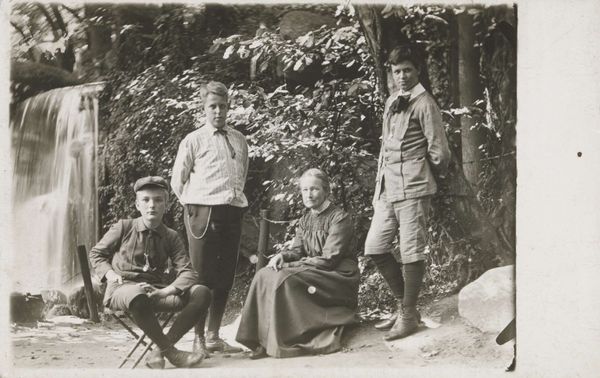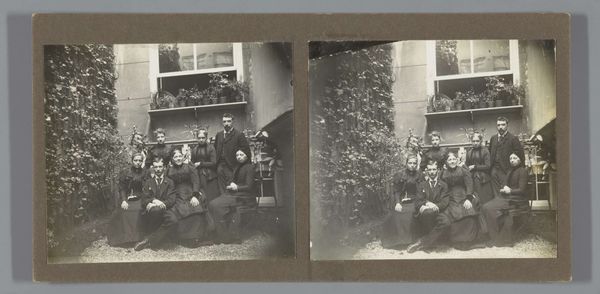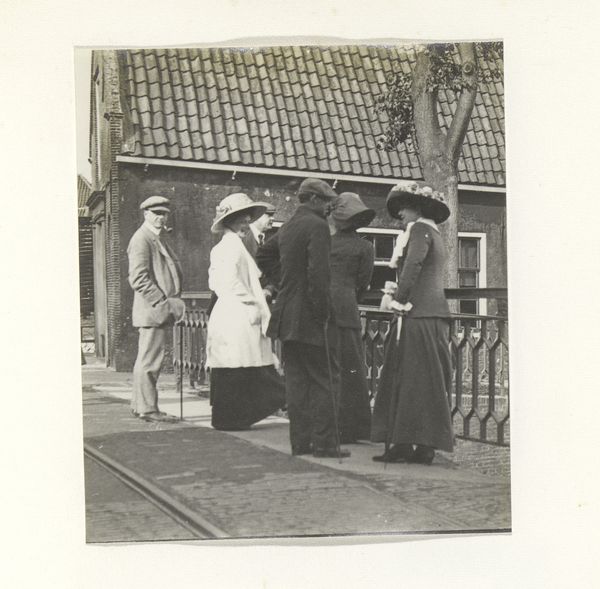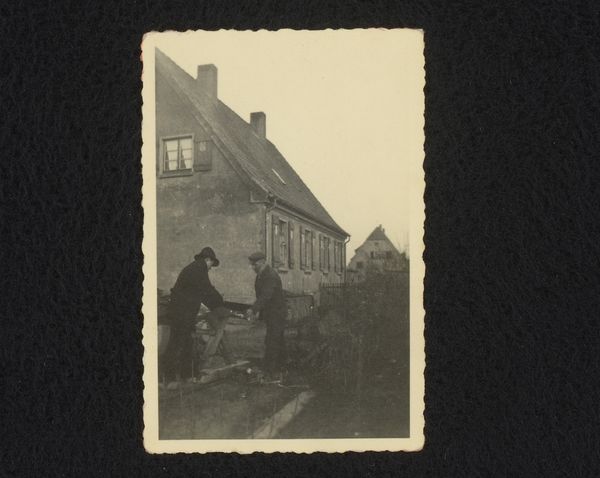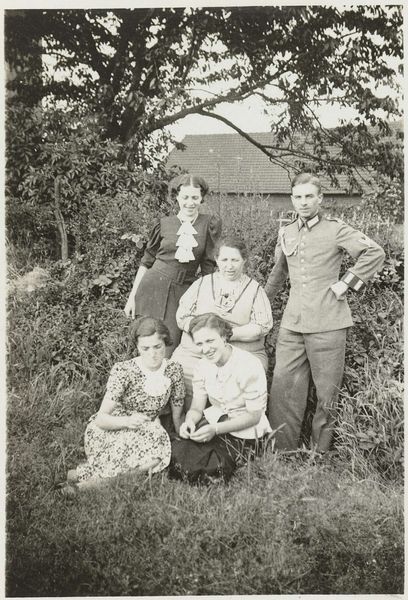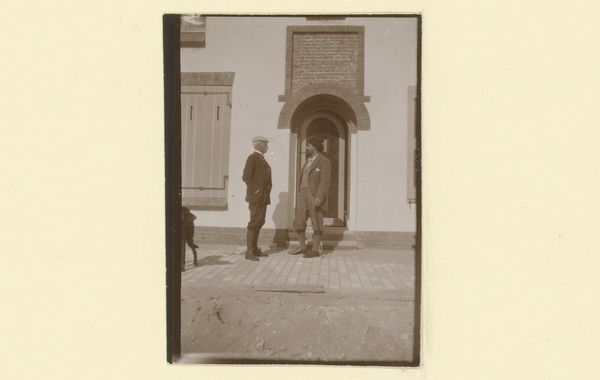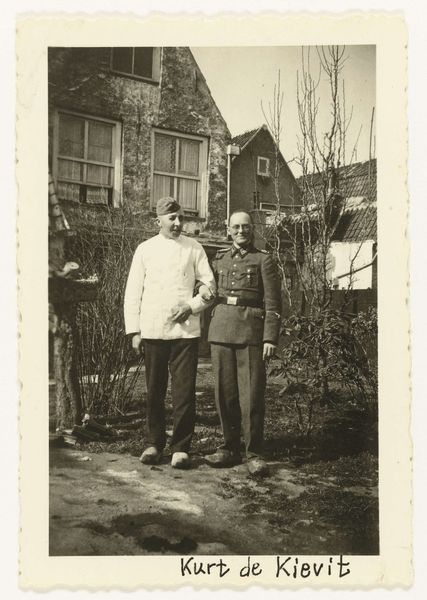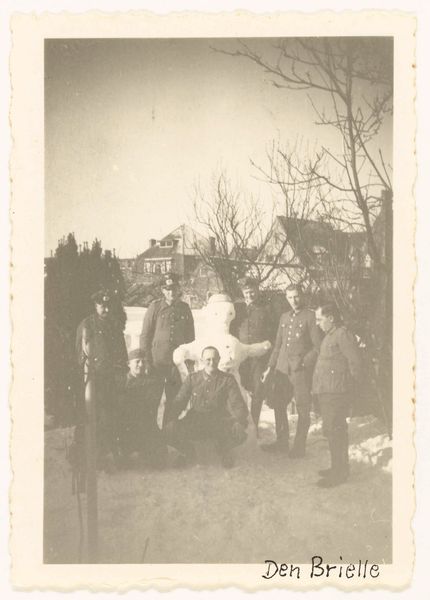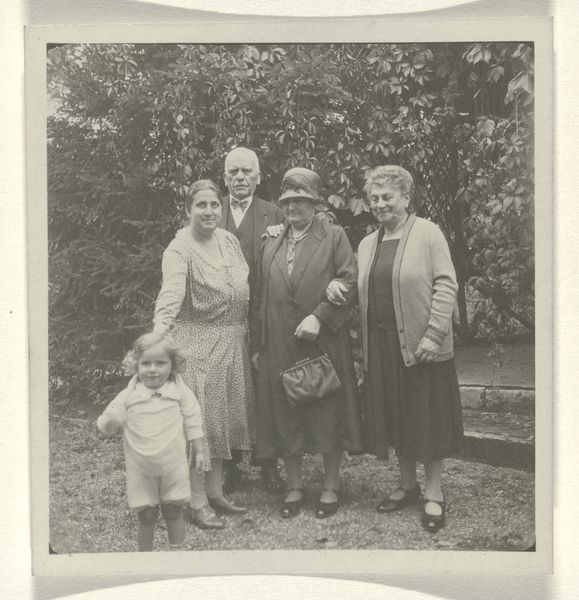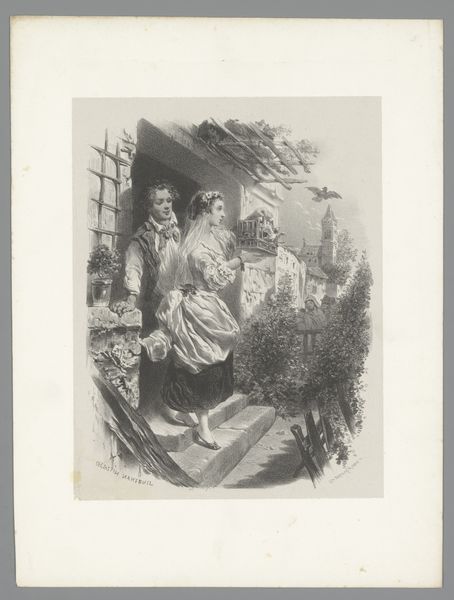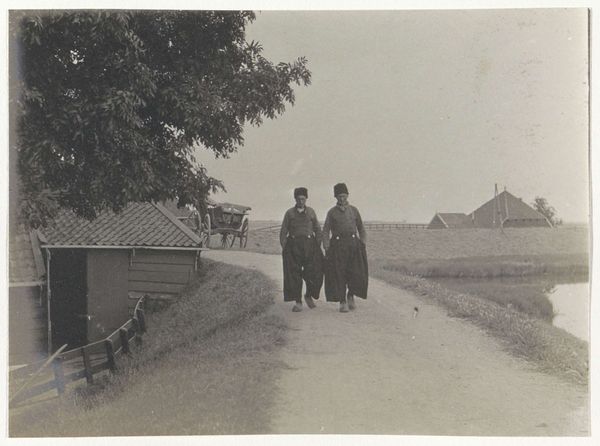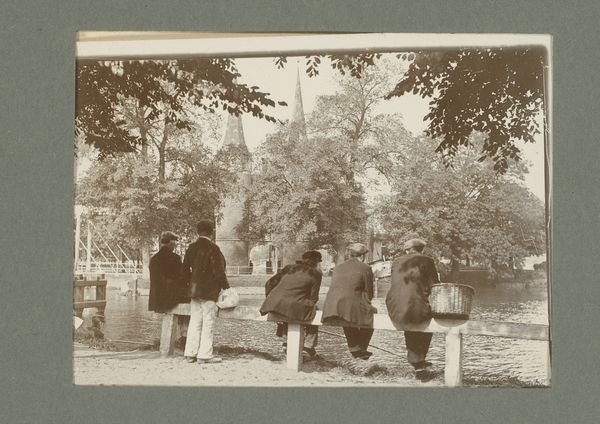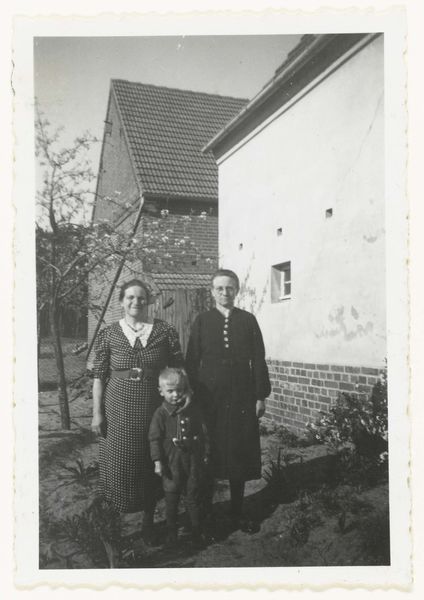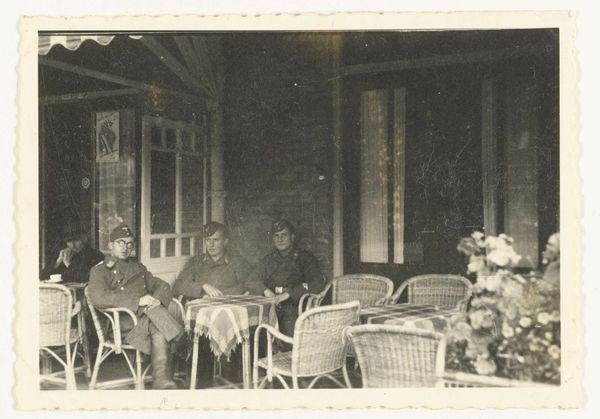
photography, gelatin-silver-print
#
portrait
#
print photography
#
photography
#
gelatin-silver-print
#
genre-painting
Dimensions: height 153 mm, width 108 mm
Copyright: Rijks Museum: Open Domain
Curator: Immediately, there's something very endearing about the unposed nature of this photograph. A candid glimpse of children. Editor: This gelatin silver print, entitled "Four Boys on a Street in Monnickendam", was captured in 1904. It presents a snapshot of everyday life in the Netherlands at the turn of the century, specifically a small, close-knit community. Curator: You're right, they have the unaffected attitude of subjects unaware of being observed. The boys exude an almost poignant openness; they could be archetypes of youthful innocence, and their collective form hints at the complex bond between the young and their shared societal identity. The way they clutch onto one another is telling of youthful reliance. Editor: Indeed. I see echoes of 19th-century genre painting in this photograph, where ordinary people are depicted in the midst of their daily routines. Notice how the cobblestone street and the traditional Dutch house in the background locate them firmly within a specific place and time. The house in particular might symbolize a generational sense of history. Curator: Absolutely, it gives a valuable insight into societal attitudes regarding childhood during that era. It prompts me to reflect on the prevailing pedagogical approaches of the time, on socio-economic stratification, even how these youngsters’ futures may already be determined by factors out of their grasp. Their clothing suggests modest means, but their togetherness signals resilience and hope. Editor: What strikes me is the column behind them, seemingly cutting right through the group’s composition. But at a second look, the column creates a sense of monumental history within this mundane context. Curator: Interesting—like they are placed on a stage, with that post becoming almost a classical pillar. Perhaps intended, perhaps just happy circumstance. It highlights the enduring presence of civic identity in their small community. Editor: On the whole, what a poignant snapshot it provides of early 20th-century community life. One wonders what became of these children. Curator: Yes, it really highlights the intersection between personal lives and broader historical trends. These young people are, in their own way, emblems of both individual hope and societal forces.
Comments
No comments
Be the first to comment and join the conversation on the ultimate creative platform.
